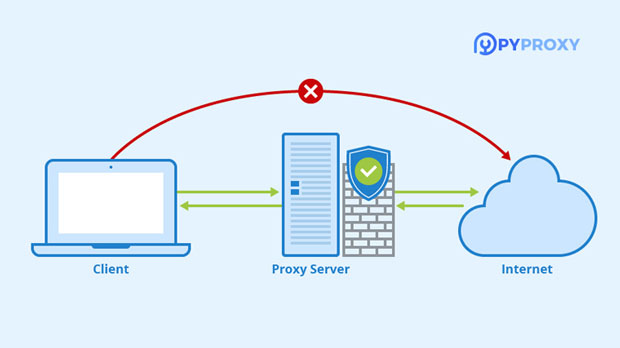In an era where online privacy and browsing speed are crucial, combining tools like Resty with a socks5 proxy can significantly enhance both. Resty, a powerful HTTP client for Go, and socks5 proxies, a versatile proxy protocol, can work together to boost security and improve performance. By using these technologies strategically, users can maintain anonymity while ensuring faster and more efficient browsing. This article explores the best practices for integrating Resty with SOCKS5 proxies, focusing on privacy protection, browsing speed improvement, and the practical steps involved. 1. Introduction to Resty and SOCKS5 ProxyBefore diving into the best practices, it's important to understand the role of Resty and SOCKS5 proxies individually. Resty is a lightweight, flexible HTTP client for Go programming language that allows easy interaction with HTTP APIs. It's widely used for handling HTTP requests in a more efficient and developer-friendly way. SOCKS5 is a proxy protocol that enables data transmission between a client and a server, effectively masking the user's IP address and encrypting the communication channel, offering increased privacy and anonymity.When combined, Resty and SOCKS5 can provide a powerful solution for improving online privacy and browsing speed. Resty’s capabilities, when paired with SOCKS5’s secure tunneling, allow users to bypass geo-restrictions, avoid throttling by ISPs, and safeguard sensitive data while browsing.2. How SOCKS5 Improves PrivacySOCKS5 proxies are known for their ability to mask the user’s IP address, providing an essential layer of privacy when browsing the internet. Unlike traditional proxies, SOCKS5 doesn’t alter the data being transmitted, which makes it a more secure and efficient option for users concerned about privacy. By using a SOCKS5 proxy, all internet traffic is routed through the proxy server, which conceals the user’s true IP address and ensures that their browsing habits are not easily tracked.The importance of privacy becomes especially evident in an age where personal data is increasingly commodified. Online activities, including browsing history, location data, and personal preferences, are constantly tracked by third parties. With SOCKS5 proxies, users can mask this data, ensuring their online presence remains anonymous and secure.3. Speed and Performance Enhancements with SOCKS5In addition to improving privacy, SOCKS5 proxies can also contribute to enhanced browsing speed. Traditional proxies and VPNs often slow down internet speeds due to the overhead associated with encryption and routing. SOCKS5, on the other hand, is designed to be faster and more lightweight, as it doesn’t encrypt the traffic by default (though optional encryption is possible). This allows for faster data transfer speeds compared to other proxy protocols.Furthermore, SOCKS5 proxies support UDP (User Datagram Protocol), which is particularly useful for streaming, gaming, and real-time applications. By utilizing SOCKS5, users can avoid ISP throttling and ensure smoother, faster browsing without sacrificing security.4. Best Practices for Integrating Resty with SOCKS5 ProxyTo achieve the maximum benefit from using Resty with SOCKS5 proxies, users must follow best practices to ensure both security and performance are optimized. Below are some steps to integrate these technologies effectively:4.1 Configuring Resty to Use SOCKS5 ProxyResty is a flexible HTTP client, and configuring it to use a SOCKS5 proxy is straightforward. In Go, the Resty client supports custom transport settings, making it easy to route HTTP requests through a SOCKS5 proxy.First, the socks5 proxy server address and port need to be specified in Resty’s transport configuration. This configuration can be done using a third-party Go package that supports SOCKS5 proxying, such as `golang.org/x/net/proxy`. Once the SOCKS5 proxy is configured in Resty, all HTTP requests made through the client will be routed through the SOCKS5 proxy server.4.2 Choosing the Right SOCKS5 ServerThe choice of SOCKS5 proxy server plays a vital role in the overall performance and security of the connection. Users should ensure that the SOCKS5 proxy server is reliable, fast, and capable of handling the traffic volume required for their use case. It's also important to ensure that the server is located in a jurisdiction with strong privacy protections.Additionally, the server should support both TCP and UDP traffic to fully leverage the capabilities of SOCKS5, especially for applications that require low latency, such as video streaming or online gaming.4.3 Handling Authentication for Enhanced SecuritySOCKS5 proxies allow for user authentication, which adds an extra layer of security. When configuring Resty to work with a SOCKS5 proxy, it is recommended to enable authentication to ensure that only authorized users can access the proxy server.Resty allows you to configure proxy credentials, such as username and password, within the transport settings. By using authentication, users can ensure that their proxy server is not misused by unauthorized parties, thus improving both security and privacy.5. Combining SOCKS5 with Additional Security MeasuresWhile SOCKS5 proxies provide an excellent layer of privacy and security, combining them with additional security measures further enhances online protection. Using encryption protocols such as HTTPS for all web traffic is an essential step. Resty supports making secure HTTPS requests, which ensures that the data transmitted through the SOCKS5 proxy is encrypted end-to-end.In addition, using multi-factor authentication for access to sensitive accounts can further protect against potential breaches. The combination of a SOCKS5 proxy with encryption, authentication, and secure practices forms a robust solution for protecting online privacy.6. Use Cases for Resty with SOCKS5 ProxyThe integration of Resty with a SOCKS5 proxy is beneficial in various use cases. Some common scenarios where this combination provides value include:6.1 Bypassing Geo-RestrictionsBy using SOCKS5, users can route their traffic through a server located in a different geographical region, effectively bypassing content restrictions and accessing region-locked content. This is especially useful for users seeking to access streaming services or websites restricted to certain countries.6.2 Improving Speed for International ConnectionsFor users who need to connect to servers across the world, SOCKS5 can help reduce latency and improve connection speeds. This is particularly useful for developers and businesses accessing international APIs or engaging in real-time communication.6.3 Secure Web ScrapingWeb scraping often involves sending a large number of HTTP requests to a website, which can lead to IP blocking or throttling. By using Resty with a SOCKS5 proxy, users can distribute their requests across different IP addresses, preventing detection and ensuring faster, uninterrupted data extraction.7. ConclusionIn conclusion, combining Resty with a SOCKS5 proxy provides a powerful solution for improving privacy and browsing speed. By masking the user's IP address, ensuring secure data transmission, and optimizing connection speeds, this combination offers an efficient and effective tool for online privacy and performance. By following best practices, including proper configuration, server selection, and additional security measures, users can ensure that their online presence remains both secure and fast.
Jan 15, 2025





























































